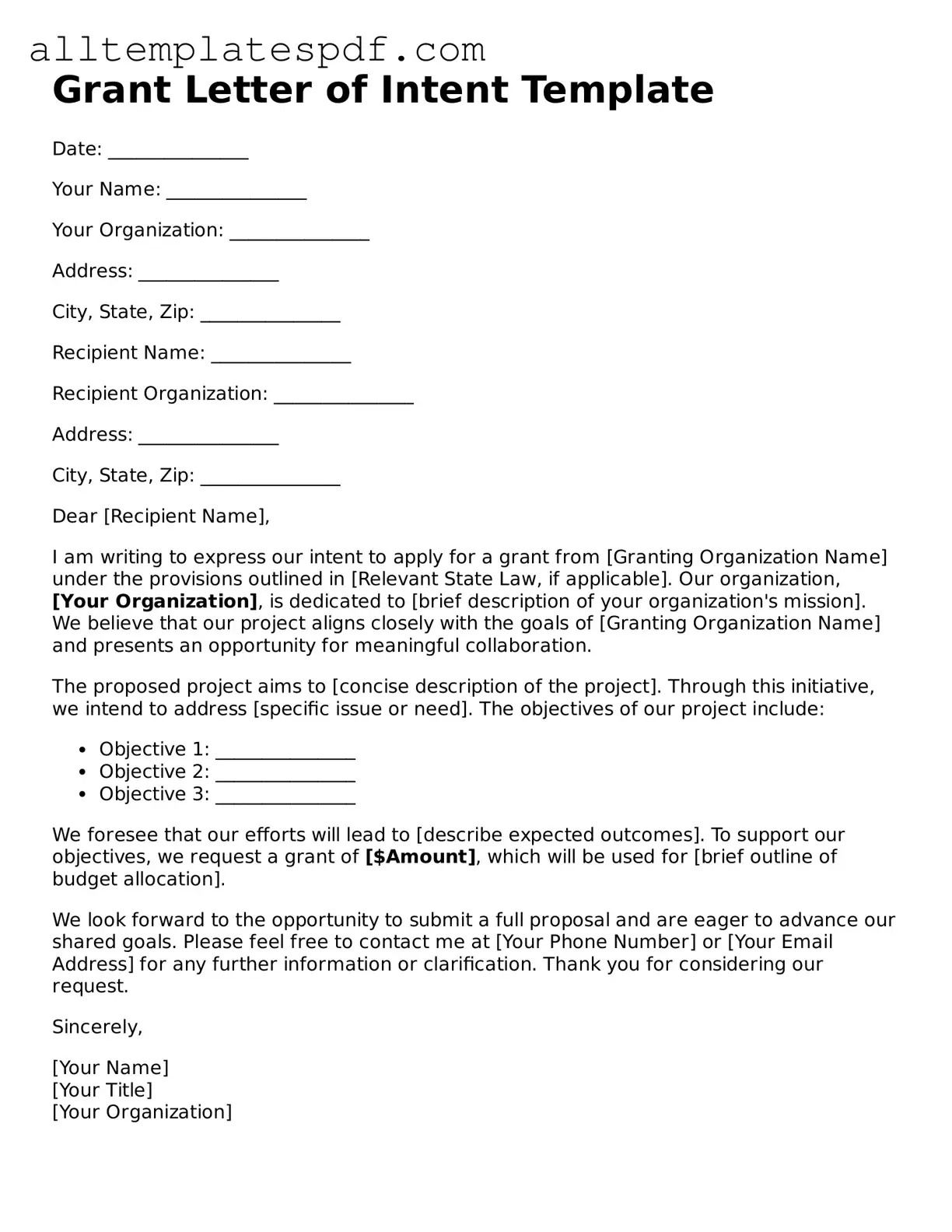Filling out a Grant Letter of Intent form can be a daunting task. Many applicants rush through the process, leading to mistakes that can hinder their chances of success. One common mistake is not following the specific guidelines provided by the funding organization. Each grant has its own requirements, and overlooking these can result in an automatic rejection.
Another frequent error is failing to clearly articulate the purpose of the grant. Applicants often assume that reviewers will understand their intentions without sufficient detail. A vague description can leave the reader confused about the project's goals and significance.
Additionally, many people neglect to proofread their submissions. Typos and grammatical errors can create a negative impression. A well-written letter demonstrates professionalism and attention to detail, while careless mistakes can suggest a lack of commitment.
Some applicants also forget to include necessary supporting documents. Each grant application may require additional materials, such as a budget or organizational information. Omitting these can lead to delays or disqualification.
Another mistake is not addressing the specific audience of the grant. Each funding organization has its own mission and priorities. Failing to align the project with these can make the proposal less compelling.
Many individuals also underestimate the importance of a strong conclusion. A weak closing statement can leave reviewers with lingering questions. Summarizing the project’s impact and expressing gratitude can strengthen the overall impression.
Finally, some applicants fail to seek feedback from others before submitting their letter. A fresh set of eyes can catch errors and provide valuable insights. Engaging colleagues or mentors can enhance the quality of the submission and increase the likelihood of success.
